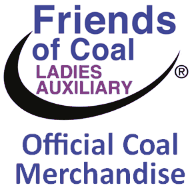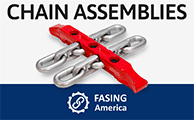
 











|
Signature Sponsor


November 25, 2025 - India's metallurgical coal supply-demand gap is expected to see little respite from the 15 million to 20 million metric tons of coal washeries that are likely to come in the next three to four years, Dr. P.K. Banerjee, Outstanding Scientist and Professor at the Central Institute of Mining and Fuel Research, told Platts, part of S&P Global Energy. Meanwhile, blast furnaces and basic oxygen furnaces are expected to expand for the next 20-25 years, despite the EU's carbon border adjustment mechanism concerns and potential for adaptation to clean hydrogen, market participants said at the Steel Tech International Seminar in Bhubaneswar on Nov. 21. India's steel production is likely to reach 230 million mt by 2030, below the 255 million mt target outlined in the national steel policy, according to Banerjee. India's national steel policy outlines steel capacity expansion to 300 million mt by 2030, alongside a production of 255 million mt. While a 90% utilization sets production at 270 million mt, "in reality, 230 million mt is a realistic figure," Banerjee said. More than 90% of India's coking coal demand is met through imports, which accounts for 35%-45% of crude steel cost, and "we can only bring imports down to 85% or 80%, unless more washeries are built," he added. Innovations to bridge gap India's "Mission Coking Coal" targets 140 million mt met coal production by 2030, with only 60 million mt/year mined at present. Nearly 100% of the 20 million mt/year coal is required for pulverized coal injection, and more than 60% of the 25 million mt/year non-coking coal required for direct reduced iron plants are imported, according to Banerjee. Major steel producers import 100% of their coal requirement, while others import 70%-80%, he added. India's year-to-date seaborne met coal imports totaled 74 million mt, according to data from S&P Global Commodities at Sea Nov. 24. Australia was the largest supplier with a net volume of 35.8 million mt, followed by 17.8 million mt from Russia, 9.4 million mt from the US, 5.9 million mt from Mozambique, and 1.7 million mt from South Africa, the CAS data showed. "Coal with low ash and good coking properties is a key driver for imports," Banerjee said. "Indian coal has the disadvantage of high ash content." Improving the efficiency of existing washeries and constructing new ones could create significant opportunities. PCI reduces coke consumption in ironmaking, thereby bringing down coking coal requirements, Banerjee said. Clean hydrogen opportunities Coke oven gas is very abundant in the steel mills and is rich in hydrogen content with over 60%, Sujit Sengupta, senior consultant at Admira Distributed Hybrid Energy Systems, said. "If we can clean up the post-carbon gas for the hydrogen component, remove the [hydrogen sulfide], and use the hydrogen for the blast furnace, the operations become green to the extent possible," Sengupta said. India's steel is predominantly produced through the blast furnace route, which is highly carbon-intensive. The EU's CBAM imposes a carbon charge based on carbon emissions from steel entering the bloc and is set to take effect in January 2026. CBAM is expected to have a major impact on India's steel exports. In 2024, more than 60% of Indian steel outflows were destined for Europe, Platts reported earlier. The Indian government has been promoting the use of hydrogen in steelmaking to safeguard exports to the EU, but hydrogen costs remain a concern. "If we can get green hydrogen, or at least blue hydrogen with the CO2 capture and [hydrogen sulfide] removal, a cost of $2-$3/kg is achievable," Sengupta said. "It cannot be done with electrical infrastructure or electrolyzer at the moment, but we are working on small modular reactors with cheap electricity," Sengupta added. "In India, the opportunity lies in the existing coke ovens and blast furnaces, and is just a matter of cleaning up the coke oven gas." |
 








|